Copyright 2020 - 2021 irantour.tours all right reserved
Designed by Behsazanhost
Iranian tablecloth: A colorful painting canvas with different fragrances
Iranian tablecloth: A colorful painting canvas with different fragrances
Iranian food culture is an interesting and attractive part of their cultural relations. In Iran, food and tablecloth are very respected. In Iranian food culture, it is believed that food is God's blessing. Thus, disrespect to food is equal to its creator. A tablecloth is a place where families meet each other 3 times a day with direct communication, thus it is very valuable in Persian food culture. Also, eating alone is a kind of disrespect to family members and a sign of poor communication. It considers a family.
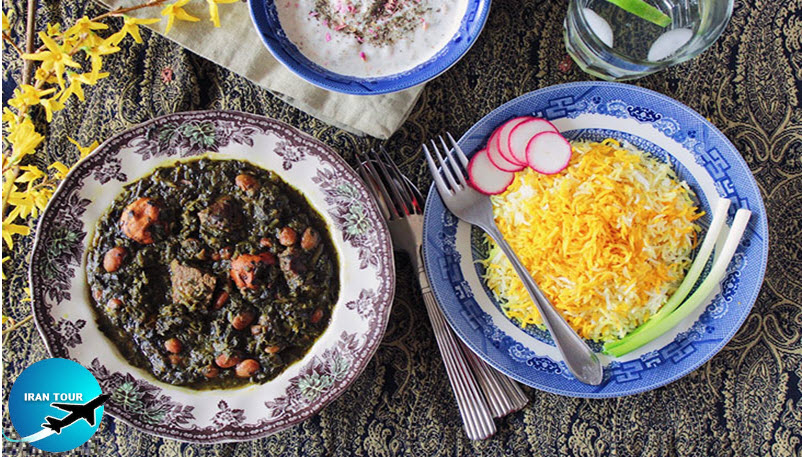 |
-Iranian cuisine is based on traditional medicine
Iranians are good and experienced cooks. Their food diversity is high, and use the most valuable and well materials to cook different traditional food. Iranian traditional medicine, which is part of the Iranian food culture, all foods are naturally divided into 4 categories: wet, dry, hot, and cold. Accordingly, Iranians believe that they should have a balance in the consumption of various foods. Otherwise, the body and the soul will suffer from illness and disease.
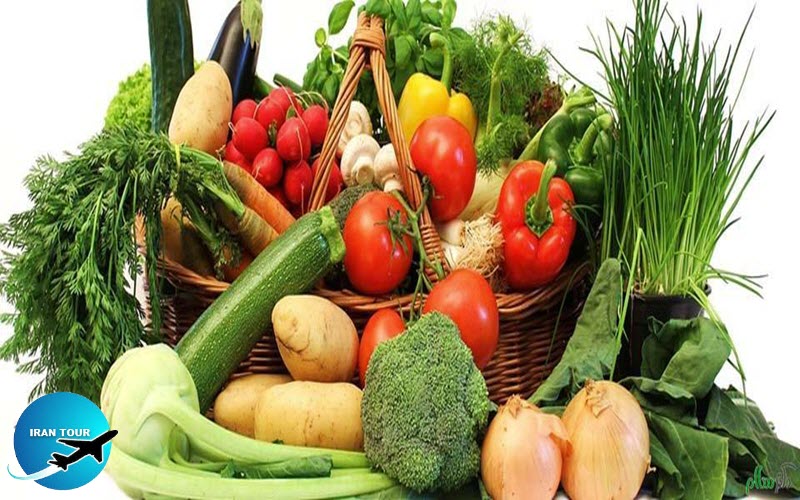 |
-What is a moderator?
Foods that balance each other's nature are called moderators. This is very important in Iranian cuisine, and traditional foods consume by their own modifiers. For example, in traditional Iranian medicine, rice has a cold nature, and vegetables such as mint, leek, tarragon, basil, etc., have a warm nature. Thus, a basket of different vegetables with a warm nature is often seen on the Iranian tablecloth. It is an integral part of Iranian food culture.
Thus, a basket of different vegetables with a warm nature is often seen on the Iranian tablecloth. It is an integral part of Iranian food culture. In the Persian language, the equivalent of "Bon appétit" is "Nooshe Jan", and that says a lot about what Iranian cuisine is: it rather means "may it nourish your soul". Thus, inherited from ancient traditions, the art of cooking in Iran follows the rules of the hot and cold nature of the ingredients. Not only does it provide good taste but it also keeps an eye on the benefits for the body.
Based on the teaching of Avicenna, all the ingredients have a cold or hot character. It does not refer to the temperature of the food itself, but to its properties and how it increases or decreases the metabolism. The idea is to keep a balance, by combining cold ingredients with hot ingredients, like eggplant (cold) with nuts (hot), or by consuming warmer affections of nature to address a health problem. cold nature. The advantages of such associations have been proven and, in addition, have extended to all dishes of Iranian cuisine.
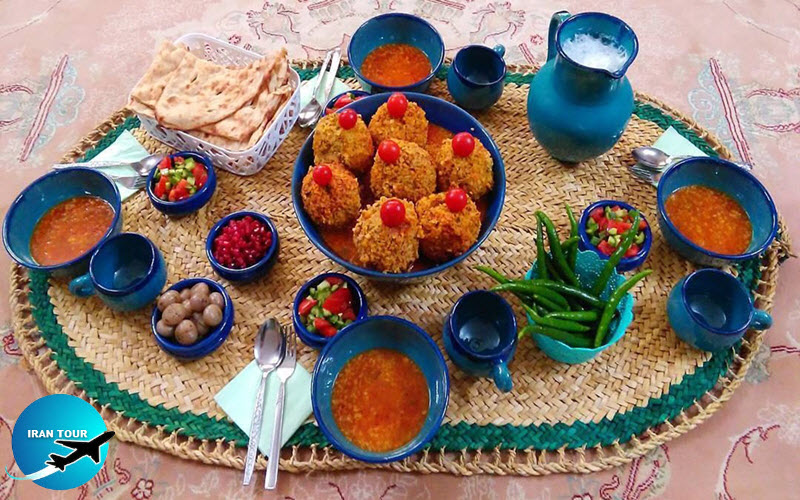 |
-Appetizers, Main Food, and Dessert
In Western culture, appetizers, main food, and desserts are brought to the table at regular intervals. But, in Iranian food culture, a variety of foods include main food, supplements, appetizers, desserts, and drinks, put on the table or tablecloth simultaneously, and use in order. Persian cuisine is often time-consuming and is not prepared in a short time like fast food. probably, the reason for this synchronism lies in such cooking techniques.
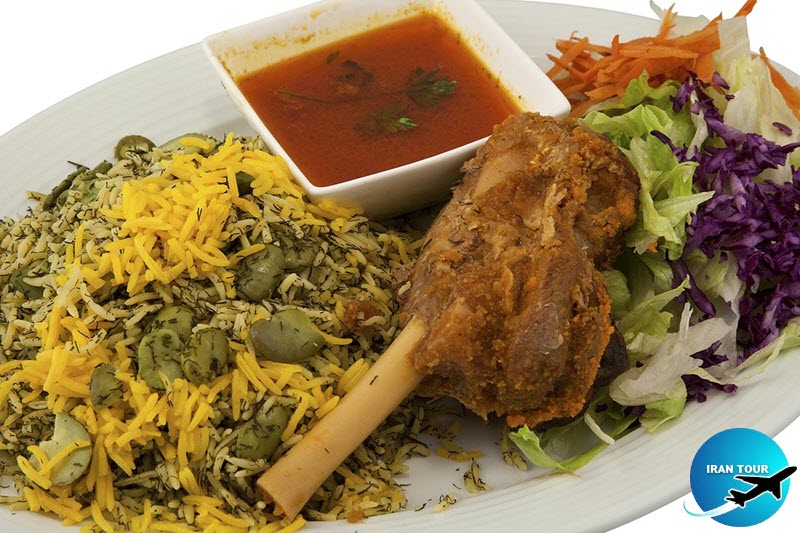 |
-Forbidden foods
In the Iranian food culture, some foods are prohibited and generally have no place in traditional food etiquette. Pork and all its products are prohibited due to religious reasons. Also, all kinds of alcoholic beverages are banned in Iran.
Eating all kinds of insects and seafood raw is also outside the scope of Iranian food culture and does not suit the tastes of the majority of citizens.
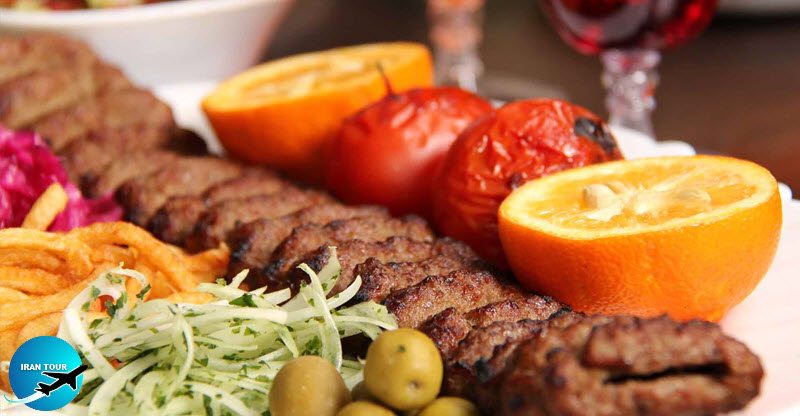 |
15 mouth-watering cuisines you have to try in Iran |
-A rich local cooking
Iran's local cuisine is more than just a barbecue. These models of food are more for restaurants' menus or weekend picnics. These dishes are available in all restaurants. But what is known as the symbol of Persian food, are Iranian stews in which the cuisine's art of Iranian women does magic. Of course, these magic family recipes are passed down chest to chest. But all Iranian cooking recipes have one common thing. Fresh and healthy ingredients, mild and complete cooking.
But, the most iconic Iranian dishes are:
Fesenoon (pomegranate walnut stew), Ghormeh Sabzi (green herb stew), Zereshk polo (a type of rice with saffron and barberry), Dizi (a stew made of sheep meat, beans, potato, and tomato), and Ash-e Reshteh (a kind of noodle soup contains rice, vegetable, peas, and beans and some Kashk.[Kashk is made from drained yogurt (in particular, drained qatiq) or drained sour milk by forming it and letting it dry.]) these are some of the most famous.
On the shores of the Caspian Sea and the Persian Gulf, fish and its products have the main role in their cuisines, and many local dishes are based on fresh fish and seafood.
Rice is an integral part of Iranian cuisine and is especially a complement to stew dishes. But rice is not only rice or cholo or a part of the cuisine. This is the art of Iranian women, from which the most beautiful and delicious types of crunchy rice (Scorched rice, crunchy rice) are obtained. in fact, Tahdig is the soul of Iranian cuisine.
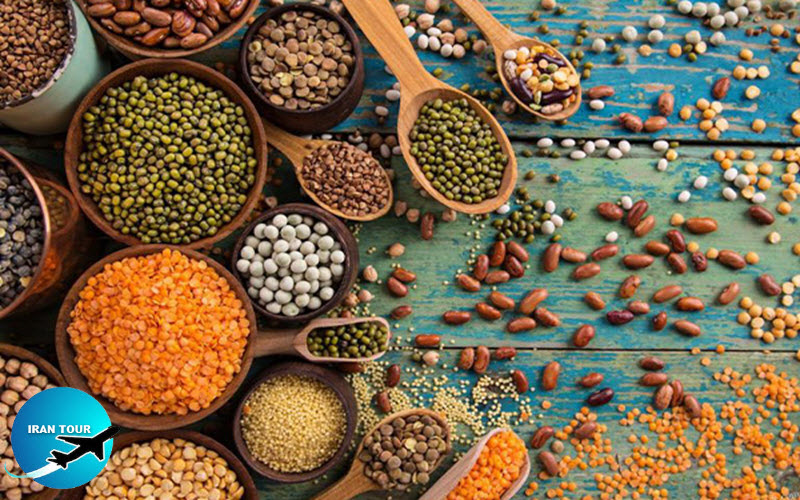 |
| Sustainable tourism of gastronomy |
- Rasht, the capital of Iran cooking
History - Culture - Geographical location - four seasons of weather - high-quality products - the Silk Road, and rich plant diversity are among the most important factors affecting the cooking style of Iran. Among the cities of Iran with a variety of recipes, the city of Rasht, the capital of Gilan province, due to the great variety of foods(more than 170), a variety of recipes, and using traditional tools and equipment for preparing and cooking is known as the Iran cooking capital by Unesco world heritage site. The most well-known cuisines are Mirza Ghassemi (eggplants with eggs, tomatoes, and turmeric), Baghali Ghatogh (fava beans stew), Torsheh Tareh(sour herb stew), Sour Kebab, Sour chicken, Houlabe( Walnut, chicken and eggplant stew).
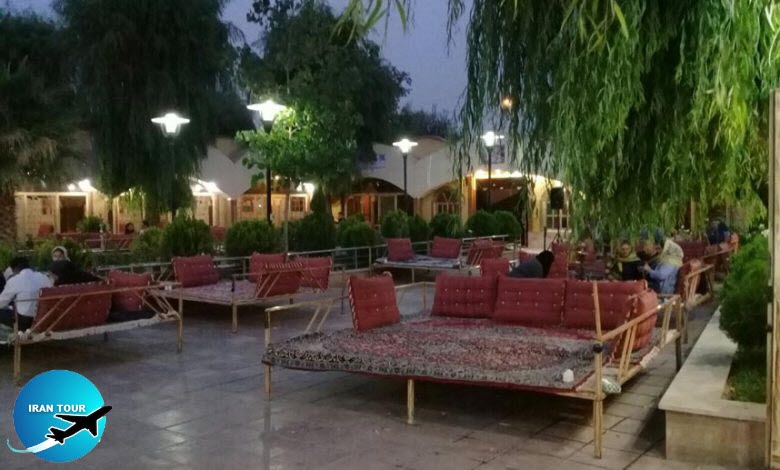 |
-How to eat like an Iranian
Iranians deeply appreciate having meals altogether and they have turned the picnic into an art. During weekends, you can see many families in parks or nature to grill kebabs, and drink tea, and simply share a pleasant meal. Maybe people nowadays sit around the table, but the traditional way of sitting on the floor around the tablecloth, or "Sofreh, is still quite common. Lots of traditional restaurants also have "Takth", a kind of wide bench covered by a carpet, upon which you can sit cross-legged to have your meal.
 |
-Iranian tablecloth supplements
Iranian tablecloth supplements can be divided into 3 categories.
- Slices of bread
- Types of salads and desserts
- Beverages
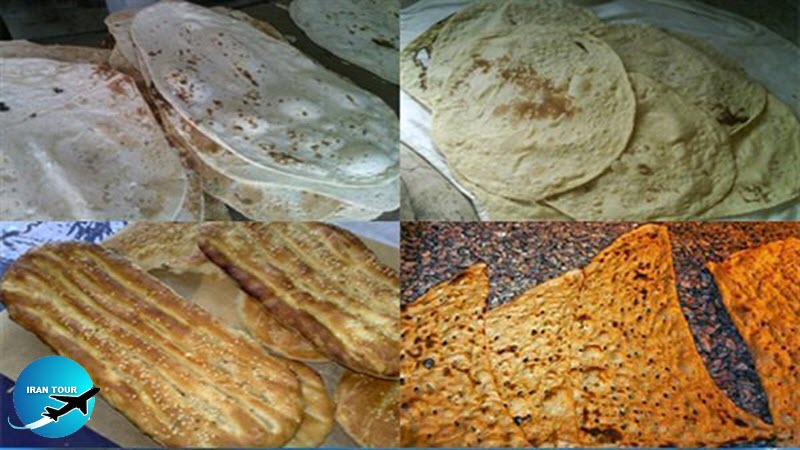 |
- Slices of bread
Different varieties of bread ("nan/noon "(as informal Farsi) serve with the meals, some of the meals are eaten just with bread and has no rice. In Iran, more than 15 models of bread are prepared and baked in different parts of the country. Among these models, the most famous are as follows. Sangak (a flatbread cooked in a traditional oven on small stones), Barbari (one of the thickest flatbread), Lavash (a thin bread made with wholemeal flour), and Taftoon (similar to Lavash with bigger holes over it).
Meals are often served with appetizers such as yogurt ("Mast"), olives ("Zeitoun"), and Shirazi salad (made with cucumber, tomato, onion, lemon) or a variety of pickles one could never see elsewhere. Herbs, sour oranges, and raw onions are also frequently served with different dishes.
- Types of salads and desserts
Meals are often served with appetizers such as yogurt ("Mast"), olives ("Zeitoun"), Shirazi salad (made with cucumber, tomato, onion, lemon), seasonal salad, or a variety of pickles one could never see elsewhere.
Dessert, like food, has a variety and diversity in Iranian cuisine. In different parts of Iran, a variety of desserts are prepared, some of which are served with food, and some at different ceremonies. Shol e Zard (saffron rice pudding), multiple kinds of halva (flour fried with saffron, rose water, and sugar), Baghlava (a pastry made with layers of filo, nuts, and honey), saffron ice cream, and Faloudeh dessert (frozen rice noodles ice cream with rose water) are among the most delicious.
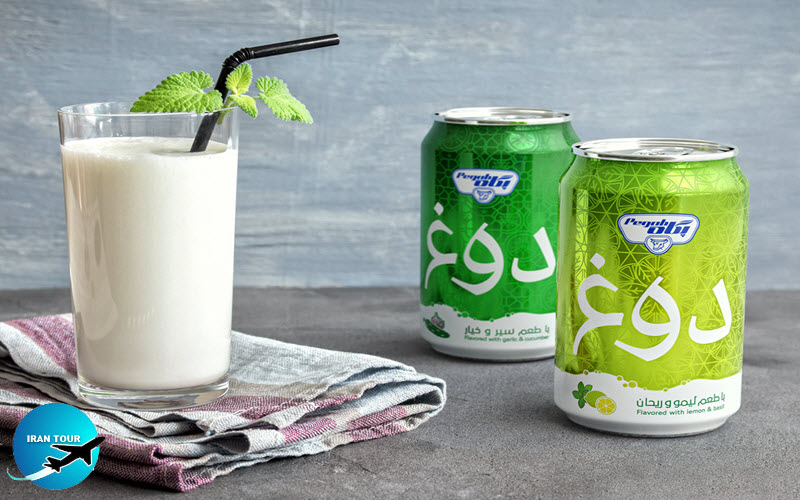 |
- Beverages
In recent years, a variety of beverages with different brands have entered the Iranian food industry, the most important of which are Coca-Cola, Pepsi-Cola, Canada Dry, 7 Up, and all kinds of non-alcoholic beverages, although all of these brands have Western roots.
But the most important and famous Iranian drink is doogh. This product, which is obtained from the combination of yogurt, salt, and water, is the oldest and most useful Iranian drink. This drink is often flavored with mint or some other herbs.
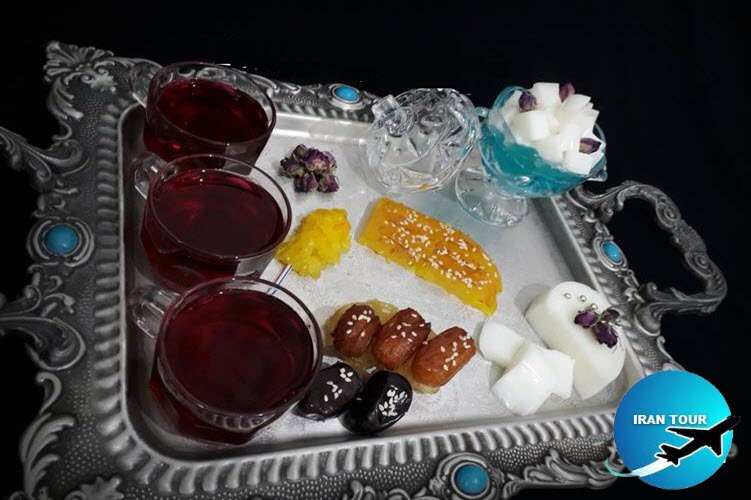 |
-Other Iranian drinks and beverages
In some southern regions, drinking coffee is also common. A variety of herbal extracts are also used as syrup while mixed with water and sugar. In general, it can be said that traditional drinks and beverages are an important part of Iranian food culture.
But the most important Iranian drink is tea, which is used in all regions of Iran. Tea is the most popular hot Iranian drink and the starter of the morning for Iranians. Iranians use black tea and traditionally use natural flavoring substances such as rose petals or orange spring and cinnamon sticks to make it fragrant. Tea is used in Iran along with traditional sweets such as date, Sohan, pollaki, and candy. Sugar cub is also the most widely available sweetener for tea.
- Details
- Category: IRAN Blog